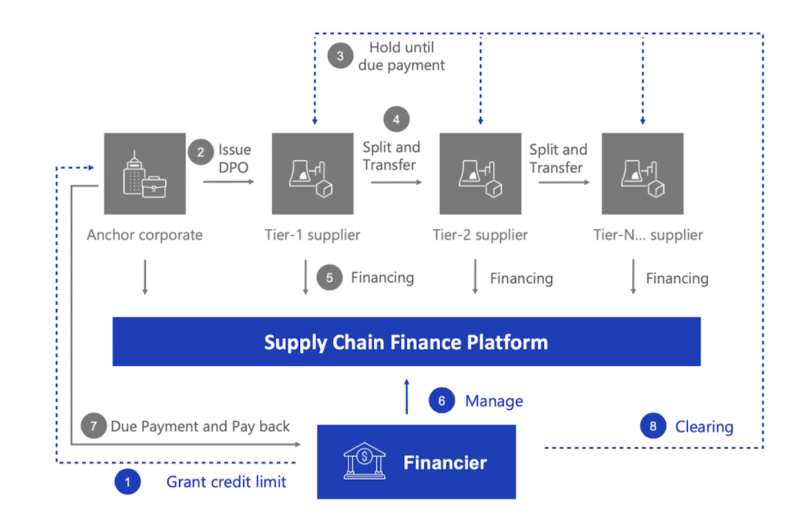To make everyone understand supply chain finance (SCF), this article defines SCF and explains the process flow and the costs of SCF. Readers also can read the advantages of SCF towards both buyers and suppliers. The information to get both SCF and flexible funding is also provided at the end of this article.
What is supply chain finance?
Supply Chain Financing (SCF) is reverse factoring. SCF enables buyers and suppliers to optimise working capital by allowing suppliers to receive payments early from SCF providers, reducing the risk of supply chain disruption.
Besides, SCF is different from others receivables finance method, such as factoring. SCF is set up by the buyer, not the supplier.
Plus, the suppliers access SCF at the cost of financing based on the buyer's credit rating. Hence, suppliers can typically obtain SCF at a lower cost than would otherwise be the case.
The term SCF is used to describe a broader range of supplier finance solutions, including solutions such as dynamic discounting, where buyers finance programs by enabling suppliers to pay invoices early in exchange for discounts. However, the term is more often used as a synonym for reverse factoring.
Some SCF programmes are funded by a single bank or finance provider, whereas others are managed by technology specialists on a multi-funder basis via a dedicated platform.
The cost of the SCF
The fundamental advantage of SCF is that the buyer does not have to pay a charge to extend payment terms, and the supplier simply has to pay a little discount if they wish to get paid sooner.
How does supply chain finance work?
Firstly, the buyer will sign into an agreement with a supply chain finance provider.
Following that, the suppliers are invited to participate in the program.
Conventionally, buyers mainly focused on onboarding their 20-50 largest suppliers. However, technologically advanced solutions now enable businesses to provide SCF to hundreds, thousands, or even tens of thousands of suppliers.
Suppliers might seek early payment on their invoices after a SCF programme is up and running.
Supply chain finance process flow
- The supplier sells goods or services to the buyer.
- The supplier sends the buyer an invoice with payment due within a particular number of days (e.g. 90 days).
- The invoice has been approved for payment by the buyer.
- The supplier demands that the invoice be paid early (e.g. on the 15th day).
- Payment is sent to the supplier by the supply chain finance provider with a small fee deducted.
- On the due date of the invoice (90th day), the buyer pays the supply chain finance provider.

Advantages of SCF towards suppliers
- Suppliers can optimise the working capital by getting paid for their invoices sooner to reduce the days sales outstanding (DSO).
- The funding cost is lower for suppliers than other forms of credit, such as factoring.
- Suppliers can forecast their future cash flow because the timing of incoming payments is more certain.
Advantages of SCF towards buyers
- Many organisations choose to implement supply chain finance programmes in combination with an endeavour to unify supplier payment terms, which can help buyers improve their working capital situation.
- Buyers can reduce the chance of a future supply chain disruption affecting their own operations by offering suppliers supply chain credit.
- Buyers can bond with suppliers stronger to have a better negotiation position by providing them with low-cost financing.
Flexible funding
Some businesses may wish to participate in both supply chain finance and dynamic discounting. For instances, some businesses have surplus cash available at certain times of the year that can be used in a dynamic discounting programme. However, at other times of the year, they may wish to invest their money elsewhere.
In this case, there are two ways to carry out.
- Incorporate two distinct financing solutions from multiple vendors
- Buyers may be able to seamlessly switch between the two models if the same vendor provides a flexible funding model.
The first way may not be ideal in terms of supplier experience. Hence, the second option is a better way to go for.
In a nutshell, SCF is a useful tool for realising capital allocation, increasing capital liquidity and lubricating the supply chain. The buyer gets to keep their working capital for longer without jeopardising their relationship, while the supplier gets paid right away, giving them additional working capital to deploy. SCF benefits both the buyer and the supplier in a simple and effective way.







